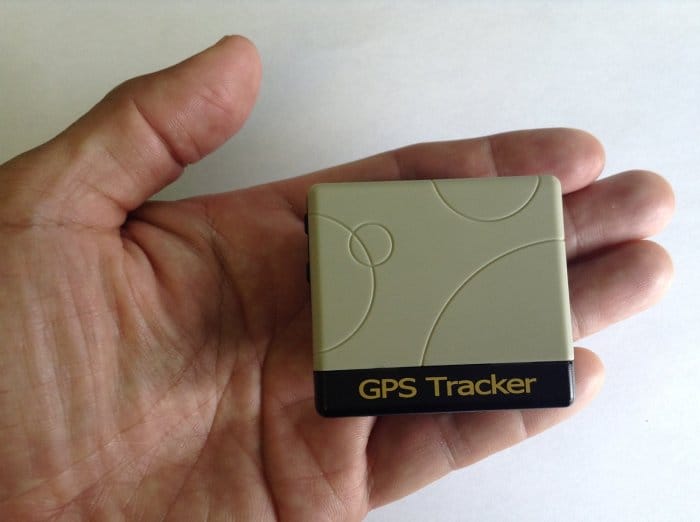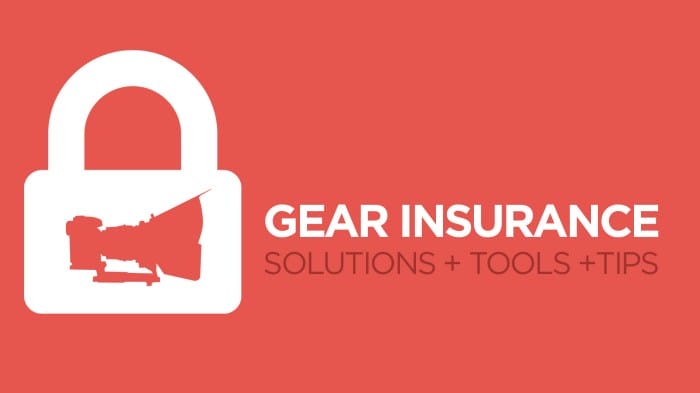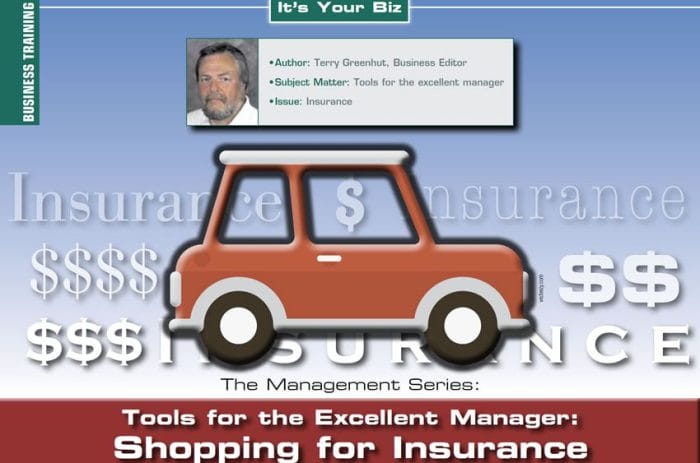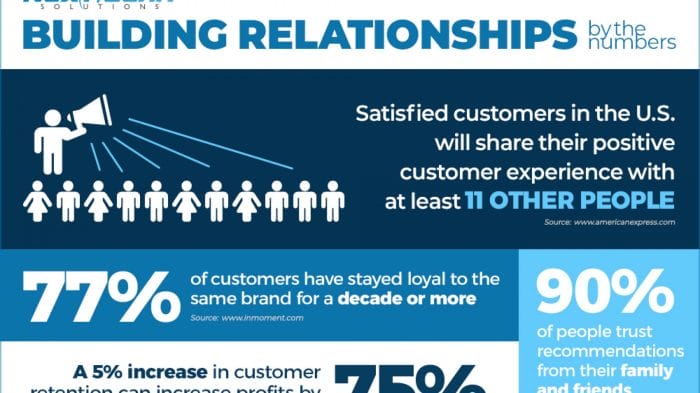In the realm of adventure and exploration, gear plays a pivotal role. Whether it’s a photographer capturing breathtaking landscapes, a hiker traversing rugged trails, or a musician crafting soulful melodies, the right gear empowers us to pursue our passions. However, unforeseen events can jeopardize our precious equipment, leading to financial setbacks and emotional distress.
Enter gear insurance, a safety net that shields us from the unexpected, ensuring peace of mind and uninterrupted pursuit of our endeavors.
In this comprehensive guide, we delve into the intricacies of gear insurance, providing invaluable tips, tools, and solutions to help you navigate the complexities of coverage options, identify valuable gear, file successful claims, and implement risk management strategies. With expert insights and real-life scenarios, we empower you to make informed decisions and safeguard your valuable assets.
Gear Insurance Basics

In the world of adventure and exploration, protecting your valuable gear is essential. Gear insurance offers a safety net, safeguarding your equipment against unexpected events and providing peace of mind. Whether you’re an avid photographer, a passionate hiker, or a professional videographer, gear insurance has you covered.
Gear insurance policies typically cover a wide range of items, including cameras, lenses, drones, laptops, smartphones, and other electronic devices. It’s crucial to understand the terms and conditions of your policy to ensure your gear is adequately protected.
Types of Coverage
Gear insurance policies generally offer two types of coverage:
- Comprehensive Coverage: This type of coverage protects your gear against various risks, including theft, damage, and loss.
- Named Perils Coverage: This type of coverage protects your gear against specific perils explicitly stated in the policy, such as fire, flood, or earthquake.
When selecting a gear insurance policy, it’s essential to consider the value of your gear, the risks you’re likely to encounter, and the level of protection you desire.
Identifying Valuable Gear
When it comes to insuring your gear, the first step is to identify and categorize your valuable items. This includes any equipment or personal belongings that are of significant financial or sentimental value and would be costly or difficult to replace if lost, stolen, or damaged.
Assessing Replacement Value
To determine the value of your gear, consider the following factors:
Original Purchase Price
This is the amount you initially paid for the item.
Current Market Value
Check online retailers, classifieds, or specialty shops to see what similar items are selling for.
Replacement Cost
This is the amount it would cost to purchase a new item of the same or similar quality and functionality.It’s important to note that the replacement value may be higher than the original purchase price, especially for items that have appreciated in value or are no longer in production.
Documenting and Proving Ownership
Once you’ve identified your valuable gear, it’s crucial to have proper documentation and proof of ownership. This may include:
Receipts or Invoices
Keep receipts or invoices as proof of purchase.
Serial Numbers
Record the serial numbers of your gear, as these can help identify and track your items in case of theft or loss.
Photographs
Take clear and detailed photographs of your gear, including close-ups of any unique markings or features.
Appraisals
For high-value items, consider getting a professional appraisal to establish their worth accurately.Proper documentation and proof of ownership will make the insurance claims process smoother and increase the likelihood of receiving a fair settlement.
Types of Gear Insurance Coverage

Gear insurance coverage varies to cater to diverse needs and gear types. Understanding the available options empowers you to select the most suitable policy for your valuable equipment.
Coverage Limits
Coverage limits determine the maximum amount an insurance policy will pay for a covered loss. It’s crucial to assess the value of your gear accurately to ensure adequate coverage.
Deductibles
A deductible is the amount you pay out of pocket before the insurance coverage kicks in. Opting for a higher deductible typically lowers your premium, but it also means a higher initial expense in case of a claim.
Exclusions
Insurance policies often have exclusions that specify circumstances or types of losses not covered. Carefully review the policy’s exclusions to avoid unexpected surprises.
Types of Coverage
- All-Risk Coverage: Offers comprehensive protection against a wide range of perils, including theft, damage, and loss.
- Named Perils Coverage: Covers losses resulting from specific perils explicitly stated in the policy, such as fire, flood, or vandalism.
- Scheduled Coverage: Provides protection for specific items listed in the policy, typically high-value items like cameras, musical instruments, or laptops.
Selecting the appropriate coverage type depends on your gear’s value, the risks it faces, and your budget. All-risk coverage offers the most comprehensive protection, but it comes with a higher premium. Named perils coverage is more limited but may be suitable for lower-value gear or if you’re on a tighter budget.
Scheduled coverage is ideal for high-value items that require specific protection.
Comparing Insurance Providers

When selecting gear insurance, comparing multiple providers is essential to secure the most suitable coverage at a competitive cost.
Factors to Consider
Consider these factors when comparing insurance providers:
- Coverage: Review the types of gear covered, limits, and exclusions under each policy.
- Cost: Compare premiums, deductibles, and any additional fees associated with the policy.
- Customer Service: Assess the reputation of the provider for responsiveness, claims processing efficiency, and customer satisfaction.
- Financial Stability: Ensure the insurance company has a solid financial standing and a history of fulfilling claims.
Research and Compare Quotes
Obtain quotes from multiple providers to compare coverage options and costs. Utilize online comparison tools or consult with insurance brokers to gather comprehensive information.
Evaluate Reputation and Reliability
Research the reputation and reliability of insurance companies through online reviews, industry ratings, and feedback from other policyholders. Consider the following:
- Financial Stability: Check the company’s financial strength ratings from reputable agencies like A.M. Best or Standard & Poor’s.
- Claims Handling: Read reviews and testimonials about the company’s claims processing efficiency and customer satisfaction.
- Industry Reputation: Look for industry awards, certifications, and accreditations that demonstrate the company’s commitment to quality service.
Determining Insurance Needs
Calculating the appropriate level of gear insurance coverage requires careful consideration of several factors. These include the value of the gear, the risk of loss or damage, and your lifestyle.
Understanding Your Gear’s Value
Accurately assessing the value of your gear is crucial for determining the appropriate coverage amount. This includes considering not only the purchase price but also any subsequent upgrades, modifications, or accessories added to the gear. Additionally, it’s important to account for any sentimental value or special significance associated with the gear, as these factors may not be covered by standard insurance policies.
Assessing the Risk of Loss or Damage
The risk of loss or damage to your gear should also be taken into account when determining your insurance needs. Consider factors such as where and how you use your gear, as well as any inherent risks associated with the activities you engage in.
For instance, if you frequently use your gear in harsh or unpredictable environments, the risk of damage or loss may be higher.
Considering Your Lifestyle and Usage Patterns
Your lifestyle and usage patterns can also influence your insurance needs. If you frequently travel with your gear or use it in high-risk activities, you may need more comprehensive coverage. Additionally, if you rely on your gear for professional or commercial purposes, you may need to consider additional insurance options tailored to business needs.
Calculating the Appropriate Coverage Amount
To calculate the appropriate level of coverage, start by determining the total value of your gear. This includes the purchase price, any upgrades or modifications, and any additional accessories. Once you have calculated the total value, you can determine the appropriate coverage amount by considering the risk of loss or damage and your lifestyle and usage patterns.
Understanding Co-insurance
Co-insurance is an important concept to consider when purchasing gear insurance. Co-insurance refers to the percentage of the total value of your gear that you are responsible for covering in the event of a claim. For example, if you have a co-insurance clause of 80%, you would be responsible for paying 20% of the total value of any claim.
Understanding the co-insurance clause in your policy is crucial to avoid any unexpected expenses in the event of a claim.
Filing a Claim

Filing a gear insurance claim can be a daunting task, but by following the proper steps and providing the necessary documentation, you can increase your chances of a successful claim.The first step in filing a claim is to contact your insurance provider and obtain a claim form.
You will need to provide the following information:* Your name and contact information
- Your policy number
- The date of the loss
- A description of the lost, stolen, or damaged gear
- The value of the gear
- Any police reports or other documentation related to the loss
Once you have submitted your claim form, your insurance provider will review it and may request additional information. Be prepared to provide receipts, photos, or other documentation to support your claim.Common reasons for claim denials include:* Not having adequate coverage for the lost, stolen, or damaged gear
- Failing to provide sufficient documentation to support the claim
- Not filing the claim within the time frame specified in your policy
To avoid these common reasons for claim denials, be sure to:* Read your policy carefully and understand the coverage limits
- Keep receipts and other documentation for all of your gear
- File your claim as soon as possible after the loss occurs
By following these tips, you can increase your chances of a successful gear insurance claim.
Risk Management and Prevention

Minimizing the risk of gear loss or damage is crucial for protecting your valuable equipment. Implementing effective risk management strategies can significantly reduce the likelihood of unfortunate incidents and ensure the longevity of your gear.
Here are some essential strategies to consider:
Proper Storage and Transportation
Proper storage and transportation of your gear play a vital role in preventing damage or loss. Ensure that you:
- Store your gear in a secure, dry, and temperature-controlled environment to prevent moisture, extreme temperatures, and dust accumulation.
- Use sturdy and well-padded cases or containers specifically designed for your gear to protect it during transportation.
- Avoid leaving your gear unattended in public places or vehicles, as this increases the risk of theft or damage.
Regular Inspections and Maintenance
Regular inspections and maintenance are essential to identify potential issues early on and prevent costly repairs or replacements. Consider the following:
- Inspect your gear regularly for signs of wear and tear, such as loose screws, frayed cables, or damaged components.
- Follow the manufacturer’s recommended maintenance schedule for cleaning, lubrication, and calibration to ensure optimal performance.
- Keep a detailed log of maintenance activities to track the condition of your gear and identify any recurring issues.
Environmental Factors
Be mindful of environmental factors that can pose risks to your gear:
- Protect your gear from extreme temperatures, humidity, and moisture to prevent damage from rust, corrosion, or warping.
- Avoid exposing your gear to harsh chemicals, abrasive surfaces, or excessive sunlight to prevent damage to delicate components.
- Consider using protective covers or cases when operating your gear in dusty or sandy environments.
Additional Tips and Considerations

Purchasing gear insurance involves several important factors beyond the basics. These include assessing additional risks, exploring potential discounts, and understanding the role of insurance brokers or agents.
Careful consideration of these aspects can lead to a more informed decision and ensure adequate protection for your valuable gear.
Factors to Consider
- Location and Usage: Consider where and how you use your gear. If you frequently travel or engage in high-risk activities, you may need additional coverage.
- Replacement Cost vs. Actual Cash Value: Replacement cost coverage provides the full amount needed to replace your gear, while actual cash value coverage depreciates the value over time. Choose the coverage that best aligns with your needs.
- Endorsements and Riders: Endorsements and riders can extend your coverage to include additional items or specific risks. These can be valuable if you have unique or expensive gear.
- Excess or Deductible: Understand the excess or deductible you’ll be responsible for in case of a claim. A higher excess may result in lower premiums, but it also means paying more out of pocket if you make a claim.
Discounts and Benefits
- Bundling Policies: Bundling your gear insurance with other policies, such as homeowners or renters insurance, may result in discounts.
- Loyalty Discounts: Some insurers offer loyalty discounts for customers who renew their policies continuously.
- Multi-Year Policies: Opting for a multi-year policy may result in lower premiums compared to annual policies.
Role of Insurance Brokers or Agents
Insurance brokers or agents can play a crucial role in the gear insurance process:
- Expertise and Guidance: They can provide expert advice on the best coverage options for your specific needs and assist you in comparing policies from multiple insurers.
- Negotiating Premiums: Brokers or agents may have the expertise and relationships to negotiate lower premiums on your behalf.
- Claims Assistance: In case of a claim, they can assist you in filing the claim and ensure a smooth and timely settlement process.
Industry Trends and Innovations

The gear insurance industry is constantly evolving, with new technologies and products emerging to better protect valuable equipment. One significant trend is the increasing use of data analytics and artificial intelligence (AI) to assess risk and tailor insurance policies to individual needs.
Additionally, the rise of the sharing economy has led to a growing demand for short-term gear insurance options, which allow individuals to rent or borrow equipment without having to purchase a long-term policy.
Technology’s Impact on the Industry
Technology is playing a major role in transforming the gear insurance industry. Telematics devices, which collect data on equipment usage and condition, are becoming more common. This data can be used to provide real-time insights into risk, allowing insurers to offer more accurate and personalized coverage.
Furthermore, the use of blockchain technology is gaining traction as a way to securely store and manage insurance policies. This can help to reduce fraud and improve transparency in the claims process.
Innovative Products and Services
Several innovative products and services are emerging to enhance gear protection. For example, some insurers now offer “pay-as-you-go” policies, which allow customers to pay for coverage only when they are using their equipment. Others are offering “smart” insurance policies that automatically adjust coverage limits based on the value of the equipment being insured.
Additionally, some companies are now offering “concierge” services, which provide customers with access to a dedicated claims adjuster and other support services to help them through the claims process.
Real-Life Scenarios and Case Studies

Gear insurance has proven its worth in numerous real-life scenarios, safeguarding individuals and businesses from financial setbacks caused by damaged or lost gear.
The following case studies illustrate the positive impact of gear insurance and its ability to provide peace of mind and financial protection:
Successful Claims and Positive Impact
- Photographer’s Camera Saved: A professional photographer’s camera was stolen during a photoshoot. Thanks to gear insurance, the photographer was able to file a claim and receive a replacement camera, ensuring minimal disruption to their business.
- Musician’s Instruments Recovered: A musician’s valuable guitar was damaged during a gig. With gear insurance coverage, the musician was able to file a claim and receive funds to repair the guitar, allowing them to continue performing without interruption.
- Outdoor Enthusiast’s Gear Protected: An outdoor enthusiast’s camping gear was destroyed in a storm. Gear insurance coverage enabled the individual to replace the damaged items, ensuring they could continue enjoying their outdoor adventures.
Final Conclusion
Gear insurance is not merely a financial safeguard; it’s an investment in your passion, your livelihood, and your peace of mind. By understanding your insurance needs, choosing the right coverage, and implementing proactive risk management measures, you can ensure that your gear remains protected, allowing you to focus on what truly matters: pursuing your passions and creating lasting memories.
FAQ
Q: What types of gear are typically covered by insurance policies?
A: Gear insurance policies commonly cover a wide range of items, including cameras, lenses, musical instruments, sports equipment, and electronic devices.
Q: How do I determine the value of my gear for insurance purposes?
A: To accurately determine the value of your gear, consider factors such as the original purchase price, current market value, and any upgrades or modifications made.
Q: What are the common exclusions in gear insurance policies?
A: Typical exclusions may include loss or damage due to normal wear and tear, theft from an unattended vehicle, and damage caused by intentional acts or gross negligence.
Q: How can I minimize the risk of gear loss or damage?
A: Implement proper storage and transportation practices, perform regular maintenance and inspections, and consider using protective cases or covers.
Q: What should I do if I need to file a gear insurance claim?
A: Contact your insurance provider promptly, provide detailed documentation of the loss or damage, and follow the claims process Artikeld in your policy.



